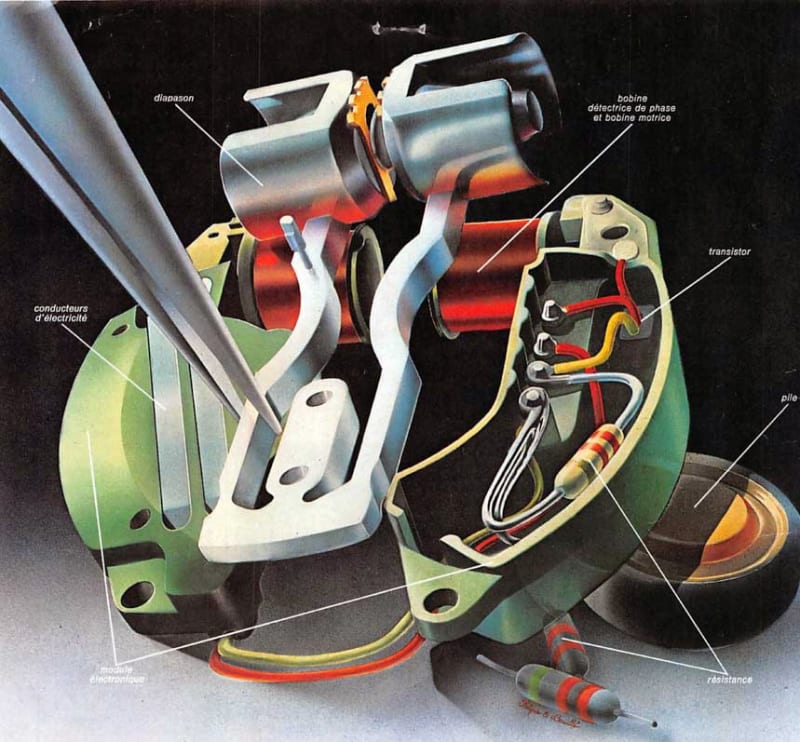OK, so when you reached the boundaries of what is possible, efficient and practical in a mechanical way, then you have to go the electronic route to enhance even further, ie. make it oscillate at higher rates and reach higher precision. This was obvious to the watchmaking industry and in the 1960s the technical improvements and miniaturization seems to make an electronic wristwatch eventually possible.
Project Alpha was the research and development project of Centre Electronique Horloger (CEH) focusing on the improvement of the tuning fork watch-movement. I am not sure what you know about this idea and technology, but it is simply fantastic and tuning fork-watches are one thing I am constantly promoting: a watch that has a sweep second, hums & vibrates gently and keeps very good time with none to low maintenance, plus the vintage factor and always a good story to tell -- well, I don’t know if this holds true in all aspects for the watch you are wearing right now, but if it is not a Beta21 or a tuning fork-watch, then I have some doubts.
I have written (or I will do soon) a short blog post about the fascinating technology of tuning fork-watches – but beware, it will grasp you and chances are low it will ever let you go again.
Back to Project Alpha: You know, Bulova was the top dog in this field and so the risks of either running open-eyed into their patents on one side or staying in their shadow forever on the other side, was rather huge. Consequently the book of Project Alpha was closed early, paving the road for Project Beta which focused on another way to get a stable high frequency oscillation: based on a quartz crystal, yes.
To be continued.
